
MuleSoft Training by Multisoft Systems offers comprehensive learning on the Anypoint Platform to streamline API development and system integration. Participants explore key topics such as API design, DataWeave, error handling, and performance tuning. The course emphasizes hands-on labs and real-world scenarios to build expertise in connecting applications, data, and devices across cloud and on-premises environments. It is ideal for developers, architects, and IT professionals pursuing advanced integration skills.
MuleSoft Training Interview Questions Answers - For Intermediate
1. What is the role of a Global Configuration element in MuleSoft?
A Global Configuration element in MuleSoft defines reusable configuration settings for components like HTTP Listener, Database Connector, and JMS. It helps centralize configuration, making flows cleaner and easier to maintain. Once defined, it can be referenced by various flow components.
2. How does API Autodiscovery work in MuleSoft?
API Autodiscovery is a feature that links deployed Mule applications to their API definitions in Anypoint Platform. By configuring Autodiscovery in the API Manager, policies such as throttling or authentication can be applied at runtime, ensuring better API governance without changing application code.
3. What is the difference between a Flow Variable and a Session Variable?
Flow Variables are used to store data within a single flow and are not retained when control is passed to another flow. Session Variables, available only in Mule 3, are preserved across multiple flows during a session. In Mule 4, Flow Variables and Event Variables are preferred, as Session Variables are deprecated.
4. What is the difference between Scatter-Gather and Choice Router?
Scatter-Gather executes multiple routes in parallel and aggregates the results, useful for parallel processing of tasks. Choice Router evaluates a set of conditions and directs the flow to a specific path based on logic, similar to an if-else construct.
5. What is Runtime Fabric?
Runtime Fabric is a container service that enables organizations to deploy Mule applications across hybrid environments, including data centers and cloud. It provides scalability, isolation, and management capabilities while allowing consistent deployment patterns.
6. What is the use of the Transform Message component?
Transform Message component is used to map and transform data between formats and structures. It leverages DataWeave language and allows developers to easily define how input data should be converted to the required output.
7. What is the use of Object Store in MuleSoft?
Object Store is a facility used to store key-value pairs temporarily or persistently. It can be used for caching, maintaining state, tracking processing status, or preventing duplicate message processing.
8. What is the main difference between Synchronous and Asynchronous flows?
Synchronous flows process messages in a single-threaded manner where the caller waits for the response. Asynchronous flows, often involving queues or background processing, decouple the sender and receiver, improving throughput and scalability.
9. What are shared resources in MuleSoft?
Shared resources, defined in Mule Domain Projects, are configurations that can be used across multiple Mule applications, such as HTTP Listeners or JMS configurations. This promotes consistency and reduces duplication across projects.
10. How do you monitor Mule applications?
Mule applications can be monitored using Anypoint Monitoring, which provides dashboards, metrics, and alerts. You can also use built-in logging with Log4j or integrate external monitoring tools such as Splunk or ELK stack.
11. What is the difference between API Gateway and Runtime Manager?
API Gateway manages the enforcement of policies on APIs such as throttling, security, and analytics. Runtime Manager is a management console used to deploy, start, stop, and monitor Mule applications across different environments.
12. What are API policies in MuleSoft?
API policies are rules applied to APIs to control behavior and ensure security. Common policies include rate limiting, IP whitelisting, client ID enforcement, OAuth token enforcement, and CORS. Policies are centrally managed via Anypoint API Manager.
13. What is a Mule Domain Project?
A Mule Domain Project enables the sharing of resources like connectors and configurations across multiple Mule applications. It provides a way to maintain consistency and reuse configurations in enterprise-level integrations.
14. What is the use of Batch Job in MuleSoft?
Batch Job is a special type of flow that processes large data sets in chunks or records. It enables parallel processing and is ideal for ETL (Extract, Transform, Load) scenarios where large volumes of data must be transformed and moved between systems.
15. What is the importance of RAML in MuleSoft?
RAML (RESTful API Modeling Language) is used to define APIs in a clear, human-readable format. It acts as a contract between API providers and consumers, allowing automatic generation of documentation, mocks, and code scaffolding, improving API-driven development.
MuleSoft Training Interview Questions Answers - For Advanced
1. How do you implement API governance in an enterprise MuleSoft environment?
API governance ensures that APIs meet organizational standards for security, documentation, performance, and compliance. In MuleSoft, governance starts at the design phase with RAML specifications that enforce consistent modeling practices. Anypoint API Manager enables centralized policy enforcement such as OAuth, throttling, IP whitelisting, and logging. Reusable API fragments promote standardization. Approval workflows and version control in Anypoint Exchange enforce lifecycle management. Automated CI/CD pipelines ensure quality checks like security scans and unit tests before deployment. Monitoring and audit trails in Anypoint Monitoring provide transparency and regulatory compliance.
2. What is the role of a Mule Domain Project in large enterprise projects?
A Mule Domain Project allows multiple Mule applications to share common configurations, connectors, and resources. For example, an organization might define a common HTTP Listener, JMS Connection, or Database Connection within the domain project. Applications deployed to the same domain can then reference these shared resources, promoting consistency and reducing duplication. This is particularly useful for enterprise projects where multiple teams build services on a shared architecture. It also simplifies maintenance because updates to shared resources only need to be made in one place.
3. How can you achieve dynamic endpoint invocation in MuleSoft?
Dynamic endpoint invocation allows MuleSoft applications to determine the target system at runtime. This is achieved by using property placeholders, DataWeave expressions, or flow variables to configure endpoint URLs. For example, an HTTP request connector’s URL can be set using a variable or read from an external property. This pattern is useful in multi-environment deployments, multi-tenant applications, or scenarios where routing decisions are made dynamically based on payload content, headers, or configuration databases.
4. Explain how message correlation works in MuleSoft.
Message correlation refers to tracking and associating related messages across flows, systems, or transactions. In MuleSoft, this is often implemented using correlation IDs, which are unique identifiers attached to messages. The correlation ID is passed across flow components and external systems, ensuring traceability even when processing is asynchronous or distributed. Logging, monitoring, and error handling can reference the correlation ID, making it easier to troubleshoot complex interactions such as request-reply patterns, long-running processes, or distributed transactions.
5. What is the difference between a scatter-gather and parallel for-each?
Both scatter-gather and parallel for-each enable parallel processing but are used in different scenarios. Scatter-gather splits processing into multiple routes (flows) that execute concurrently and aggregates their responses. It is used for parallel service calls or integrations with multiple systems. Parallel for-each operates on a collection of items, executing a set of steps concurrently for each item. It is used for batch-style parallel processing of lists or arrays. Scatter-gather operates at flow level, while parallel for-each operates at item level within a flow.
6. How does MuleSoft handle large file processing and file streaming?
MuleSoft supports large file processing through streaming capabilities. When dealing with large files such as XML, CSV, or JSON, connectors like File or FTP can be configured to stream the file rather than loading it entirely into memory. DataWeave transformations can also be configured to stream data lazily, processing one record at a time. This allows for scalable and efficient handling of large datasets such as log processing, ETL pipelines, and real-time file-based integrations. Memory usage and performance are optimized.
7. How can you implement circuit breaker patterns in MuleSoft APIs?
Circuit breaker patterns prevent cascading failures in distributed systems by halting requests to unstable services. MuleSoft allows implementation of circuit breakers using API Gateway policies or custom flow logic. The pattern monitors error rates and, after exceeding a threshold, temporarily blocks further calls to the failing service. During the block period, fallback logic can return cached data or a predefined response. Once the service recovers, the circuit closes and normal traffic resumes. This pattern improves system resilience and user experience.
8. How does MuleSoft manage multi-cloud or hybrid-cloud deployments?
MuleSoft’s Runtime Fabric enables deployment of Mule runtimes across hybrid and multi-cloud environments, including private data centers, AWS, Azure, and Google Cloud. APIs and applications are designed once and deployed consistently across environments. Centralized control is maintained via Anypoint Control Plane. Runtime Fabric abstracts away infrastructure differences, allowing container-based deployment with scalability and isolation. APIs can communicate securely across cloud boundaries using VPNs or service meshes. Anypoint Monitoring provides unified observability across the hybrid architecture.
9. How do you implement caching in MuleSoft to improve API performance?
Caching can be implemented at multiple layers in MuleSoft. The simplest approach is using the Object Store to cache responses or frequently accessed data. The Cache Scope in Mule allows developers to cache flow results based on input keys. On the API layer, API Gateway policies like Response Caching can be applied, reducing backend load and improving response times. Caching strategies should consider cache invalidation, TTL (time to live), and cache consistency to ensure data correctness while maximizing performance benefits.
10. How does MuleSoft support asynchronous messaging and event-driven architecture?
MuleSoft supports asynchronous messaging through integration with JMS providers, AMQP brokers, and cloud-based messaging systems like Azure Service Bus or AWS SQS. Mule applications can publish messages to queues or topics, enabling decoupled communication between producers and consumers. Event-driven architectures can be built using MuleSoft’s Event-Driven Runtime combined with connectors for Kafka, RabbitMQ, or other event buses. This enables scalable, loosely coupled systems where services react to events asynchronously, improving resilience and flexibility.
11. What is the purpose of API Experience Portals in MuleSoft?
API Experience Portals are consumer-facing portals automatically generated from API definitions in Anypoint Exchange. They provide interactive documentation, test consoles, code samples, and subscription capabilities. API Experience Portals accelerate API adoption by providing developers with everything needed to understand and use the API. They can be customized with branding, usage guidelines, and community forums, enabling organizations to promote internal or external API programs and foster API ecosystems.
12. How can you implement contract-first API development in MuleSoft?
Contract-first API development starts with defining the API specification (RAML or OAS/Swagger) before writing any code. This approach ensures alignment between stakeholders, clear expectations, and testable contracts. MuleSoft’s Anypoint Design Center facilitates API specification development with visual editors and validation tools. Once the contract is approved, developers scaffold the API implementation in Anypoint Studio. Mock services can be generated for parallel development and testing. This methodology supports test-driven development, API versioning, and consistent API governance.
13. What is API Mesh and how can MuleSoft support it?
API Mesh is a design pattern where a collection of APIs is managed as a single virtual API, abstracting backend complexities and enabling flexible composition of services. MuleSoft supports API Mesh through API Gateway, API Manager, and Anypoint Service Mesh. By leveraging service mesh integrations such as Istio or native support within Runtime Fabric, MuleSoft APIs can participate in service discovery, traffic shaping, mutual TLS, and observability. API Mesh facilitates multi-cloud, polyglot microservices environments where services can be composed dynamically.
14. How does MuleSoft enable observability across distributed systems?
MuleSoft enables observability through Anypoint Monitoring, which offers real-time dashboards, logs, distributed tracing, and SLA tracking. Tracing spans individual API calls across microservices, allowing end-to-end transaction visibility. Correlation IDs and trace IDs link related logs and metrics across systems. Integration with third-party observability platforms such as Splunk, Datadog, and New Relic extends visibility beyond the Mule layer to infrastructure and other application layers. Observability helps proactively detect bottlenecks, ensure compliance, and improve system reliability.
15. How can you manage API monetization with MuleSoft?
API monetization involves exposing APIs to partners or external customers and charging based on usage. MuleSoft supports monetization through API Manager by applying rate limiting, quotas, and subscription plans. Usage analytics provide insights into API consumption patterns. Integration with billing systems can automate invoicing and payments. Partner portals and experience portals enable API marketing and developer engagement. By tracking usage and enforcing subscription agreements, organizations can generate new revenue streams and manage partner relationships effectively.
Course Schedule
| Dec, 2025 | Weekdays | Mon-Fri | Enquire Now |
| Weekend | Sat-Sun | Enquire Now | |
| Jan, 2026 | Weekdays | Mon-Fri | Enquire Now |
| Weekend | Sat-Sun | Enquire Now |
Related Courses
Related Articles
- Master Networking with Professional Cloud Network Engineer Training
- Architectural Visualization in 3DS MAX: From Concept to Reality
- Security and Compliance with IBM Websphere Transformation Extender - Essentials
- Understanding the Benefits of SmartPlant P&ID for Process Plant Design
- Introduction to Distributed Control Systems (DCS) Training Course
Related Interview
Related FAQ's
- Instructor-led Live Online Interactive Training
- Project Based Customized Learning
- Fast Track Training Program
- Self-paced learning
- In one-on-one training, you have the flexibility to choose the days, timings, and duration according to your preferences.
- We create a personalized training calendar based on your chosen schedule.
- Complete Live Online Interactive Training of the Course
- After Training Recorded Videos
- Session-wise Learning Material and notes for lifetime
- Practical & Assignments exercises
- Global Course Completion Certificate
- 24x7 after Training Support

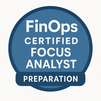

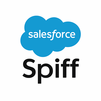
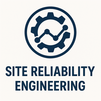
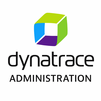


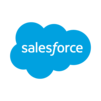


 Join our Live Instructor-Led online classes delivered by industry experts
Join our Live Instructor-Led online classes delivered by industry experts